Judaising Jerusalem? You betcha!
One of the most ridiculous charges against Israel by both extremist Muslims and the anti-Israel hard left is that of “Judaising” Jerusalem. Every time I hear that phrase it almost makes me giggle. Firstly, it just sounds ridiculous – such a stupid invented word; secondly it is ridiculous. It is like accusing the Vatican of Catholicising Rome, or Saudi Arabia of Islamizing Mecca. The connection of the Jewish people to Jerusalem is so long, so central to the Jewish religion and Jewish culture and so well-documented that it seems pointless to even try and counteract these absurd indictments.
Furthering marginalizing the Jews’ connection to Jerusalem, I found it quite astonishing to find not one mention of Pesach or Passover in any of the mainstream British media. Papers and sites which publish dozens of articles about Ramadan, Eid, Diwali and Kwanzaa, not to mention Christmas and Easter (but not in Jerusalem), can find nothing to write about one of Judaism’s major festivals. Media which obsess about every Israeli action, which examine each Israeli town-planning decision with a microscope, cannot find one interesting – or even uninteresting – thing to write about Matza baking, chametz burning, Pesach food shopping, let alone the huge throngs of hundreds of thousands of Jewish pilgrims who went up to Jerusalem to visit its holy sites, museums, exhibitions and cultural sites.
This being the case, I have decided to tell you about our own attempt to Judaise Jerusalem as thoroughly as we could – and we had a jolly good time while we were at it! Yesterday I wrote about our visit to the Jerusalem Botanical Gardens; today I am posting about our visit to the Davidson Center in the Old City of Jerusalem, and the Archaeological Park next to and beneath the Kotel (Western Wall).
We walked from our hotel down to Shaar Yafo (Jaffa Gate), then through Mamilla and the Jewish Quarter, to the Kotel. This picture doesn’t really do justice to the human traffic jam that we encountered in the narrow lanes of the Old City. The crowds were thronging the pavements and roads of the Arab shuk and the Jewish Quarter at any and every time of day. What a marvellous feeling to see the ancient streets come alive again with the footsteps of Jewish Olei Regel (pilgrims) and foreign tourists.
We pushed and shoved (as good Israelis) and descended down towards the Davidson Center just inside the Shaar Ashpot (Dung Gate).
Our first view of the site was rather unusual to say the least – and certainly not of any archaeological value for at least another thousand years. 
Our guide first took us to the visitors’ center where we watched a fascinating panoramic reconstruction of the Temple Mount as it would have looked in Herod’s day. The virtual panorama was superimposed with photos of the actual archaeological findings at the site to give us an idea of what we were going to see.
We then emerged back into the brilliant sunlight, and were taken on a tour of the archaeological digs and findings at the site itself. We were standing along the continuation of the Kotel, the Western Wall of the original Temple Mount, just below the Al Aqsa Mosque (the one with a greyish dome).
In the picture above you can see the remains of an arch emerging from the wall going off to the left. Our guide explained that this is known as Robinson’s Arch (after the man who discovered it) and supported a street above leading to the Temple enclosure itself.
Our guide explained that although the Kotel is now revered as a holy site, it was originally the outer retaining wall of the Temple Mount, and as such had no holiness attached to it. It is only because it is the last remnant of the Temple that we so revere it today. 2,000 years ago, the Western Wall housed shops! These shops provided provisions for the many Olei Regel that arrived there – animals for sacrifices, food and drink for the pilgrims and their families, even money-changers to change foreign currency into shekels so that each person could donate their obligatory half-shekel (machatzit hashekel).
Other fascinating finds were the very many mikvaot (ritual bath) in the area, which were used by the Olei Regel to purify themselves before ascending to the Temple.
I found the sight below to be very moving. The huge stones lay as they fell after being pushed off from the Temple Mount by the invading Romans. The weight of the stones cracked the street below.
Here are a few other photos that I took whose captions are self-explanatory.
How anyone can look at these archeological treasures and deny that the Jews have any connection to Jerusalem is simply beyond me.
Chag sameach to all those celebrating!
http://anneinpt.wordpress.com/2012/04/12/judaising-jerusalem-you-betcha/
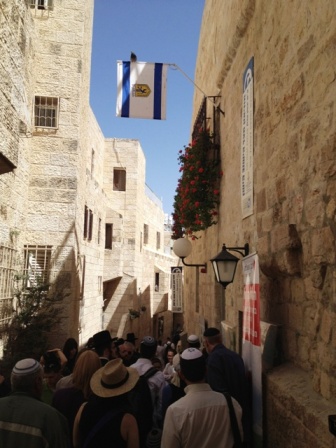
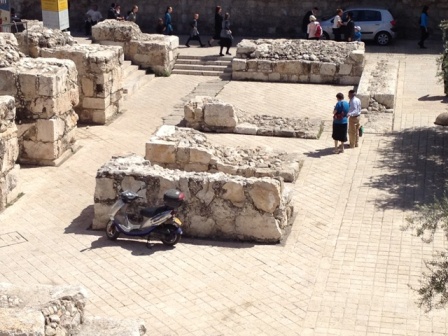

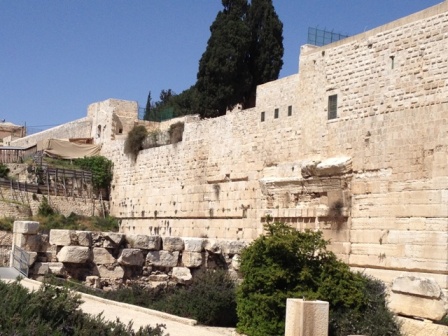

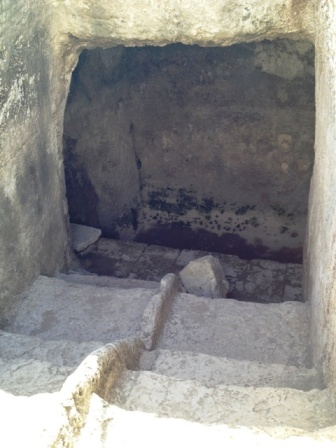
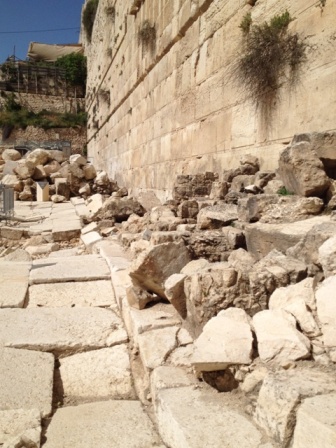
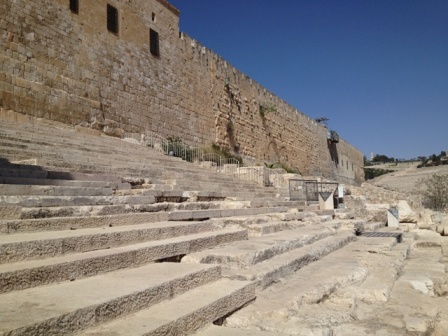
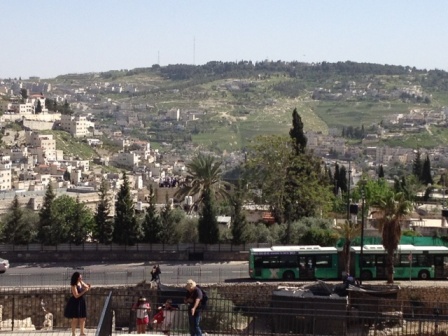
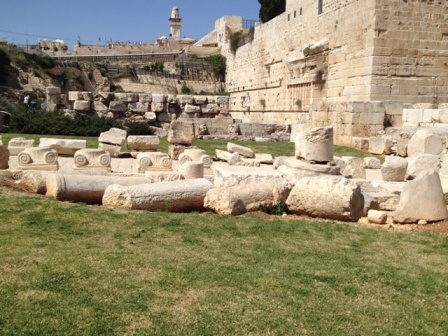
No comments:
Post a Comment